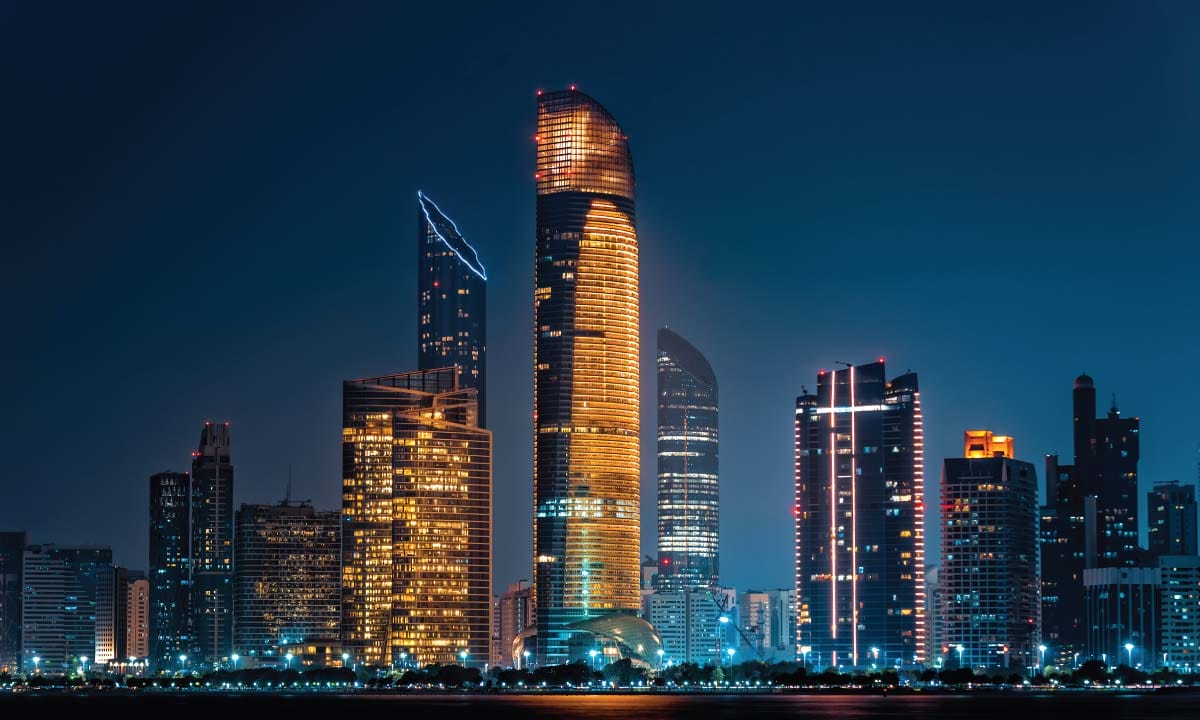Abu Dhabi, the capital of the United Arab Emirates (UAE), boasts a resilient real estate market. The sector has recorded steady growth across various segments: residential, commercial and hospitality in the third quarter (Q3) of this year. This is according to the figures revealed by ValuStrat, a leading consultancy specializing in multi-sector advisory services, in its newest report about the emirate’s real estate performance.
Fueled by robust economy
In 2022, the UAE saw an overall fiscal surplus, driven by a substantial 31.8 percent year-on-year (YoY) increase in revenues. This comes amid a 6.1 percent rise in expenditures. Meanwhile, projections from the World Bank show that the real gross domestic product (GDP) of the UAE will grow by 2.8 percent in 2023.
This strong economic performance sets a favorable backdrop for Abu Dhabi’s real estate market.
Residential market
In Q3 2023, the residential segment of the Abu Dhabi real estate market demonstrated moderate capital gains. The ValuStrat Price Index (VPI) saw an annual growth of 4.3 percent and a quarterly increase of 0.8 percent, reaching a total of 75.5 points.
While apartment valuations remained steady compared to the previous quarter, they saw a 3.3 percent annual growth, reaching 72 points. In contrast, the villa market demonstrated stronger performance. It saw a 1.3 percent quarter-on-quarter (QoQ) increase and a substantial 5.3 percent YoY growth, achieving a score of 79.2 points.
“Abu Dhabi’s real estate sector is navigating through an era of strategic growth and maturity,” shared Declan King MRICS. He is the managing director and group head of real estate at ValuStrat.
“With residential capital gains exhibiting a nuanced upward trajectory, it is evident that the market is maintaining sustainable increases, balancing the scales between supply and demand,” he added.
Read: Abu Dhabi residential market up on capital gains
Rental performance
Abu Dhabi’s rental properties showed promising growth as the VPI for annual rental values expanded by 7 percent annually. On a quarterly basis, it grew 1.2 percent. Meanwhile, villa rental values stood at 92 points, with a notable 9.6 percent annual and 2.8 percent quarterly increase. Moreover, citywide apartment asking rents saw a 4.7 percent annual rise, but with no significant change quarterly.
Quarterly data revealed the most substantial increases in villa rents occurring in Saadiyat Island (3.2 percent), Al Reef (3.1 percent), and MBZ City (2.1 percent). Furthermore, Saadiyat Island and Al Reef, together with Al Reem, recorded the most significant rental growth among the monitored apartment locations. They recorded increases of 3.5 percent, 3.2 percent, and 2.6 percent, respectively.
The average occupancy rate among a sample of over 52,000 homes in Abu Dhabi City was a robust 85.1 percent.
Sales grow amid price increases
In Q3, ready home median prices were nearly $2,750 per square meter. This represents a 1.7 percent YoY increase. However, it marks a 8.3 percent decline from the previous quarter. Off-plan properties reached $3,620 per square meter, with a 6.2 percent QoQ rise and 1 percent YoY growth.
Despite rising prices, the market saw a surge in off-plan transactions at 75.1 percent. This reflects an 8.3 percent QoQ increase and an impressive 99.2 percent YoY growth. On the other hand, ready home sales grew by 13.2 percent quarterly and a substantial 45.6 percent yearly.
Furthermore, there were 1,247 registered mortgages worth $1.3 billion. This indicates a strong real estate financing environment.
Haider Tuaima, director and head of real estate research, ValuStrat said, “While the secondary market in Abu Dhabi has been growing at sustainable levels, mainly driven by domestic buyers, the primary off-plan market, on the other hand, is likely drawing increasing attention from international investors.”
Commercial market
In the commercial sector, the city’s office stock stood at 3.9 million square meters (42 million square feet) in Q3. Median office sales prices grew by 2 percent quarterly. However, office asking rents in primary commercial districts declined by 5.1 percent quarterly.
In terms of typical occupancy rate, buildings within the central business districts of the city reached 90 percent. Remarkably, Aldar has achieved a 99 percent office occupancy within its Grade A commercial properties located at the Abu Dhabi Global Markets.
In parallel, retail space performance is also thriving. The retail sector has witnessed strong growth, with leading retail developer Aldar recording an occupancy rate of 92 percent for its retail assets during the first half of 2023. Yas Mall, a key retail destination, boasts an impressive 99 percent occupancy rate, indicating an annual increase of 4 percent.
“[It’s] great to see some upticks in commercial asset classes too, a reflection of solid economic fundamentals and business activity,” remarked King.
Hospitality and industrial performance
In the hospitality segment, the occupancy rate for the period of January to August increased by 2 percent from the previous year. In particular, the Average Room Rate (ARR) and the Revenue Per Available Room (RevPAR) rose by 22 percent and 24 percent annually, respectively.
This is driven by the tourism boom in the city. As of August 2023 data, Abu Dhabi welcomed a total of 2.92 million tourists, reflecting a 33 percent increase compared to the same month in 2022.
The top visitor nationalities in Abu Dhabi during Q3 were from the UAE (22 percent), India (11 percent), the UK, Egypt and the Philippines (4 percent each).
The industrial sector in Abu Dhabi remains robust, with significant construction projects contributing to the local economy. While industrial rental rates observed no notable changes in Q3, warehouse prices remained stable at the lower end of the price range. This provides potential stability for investors in this segment.
For more stories on real estate, click here.








